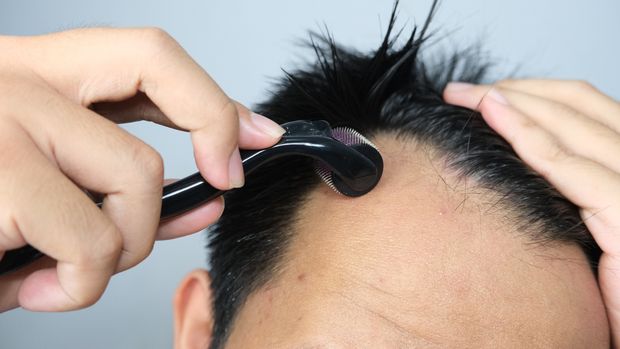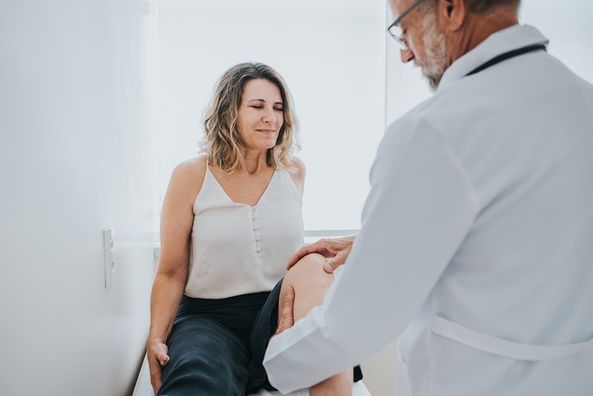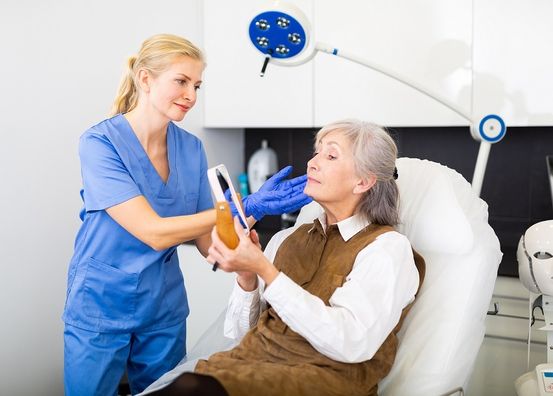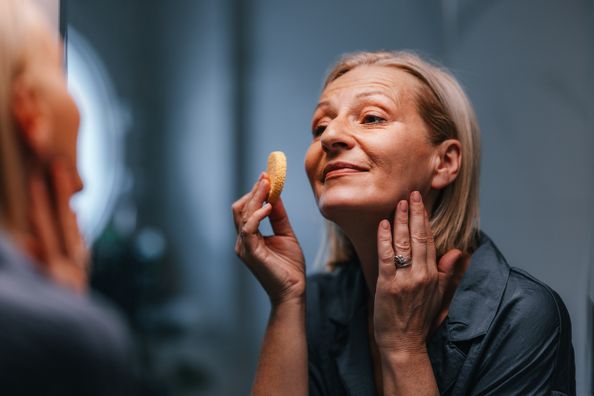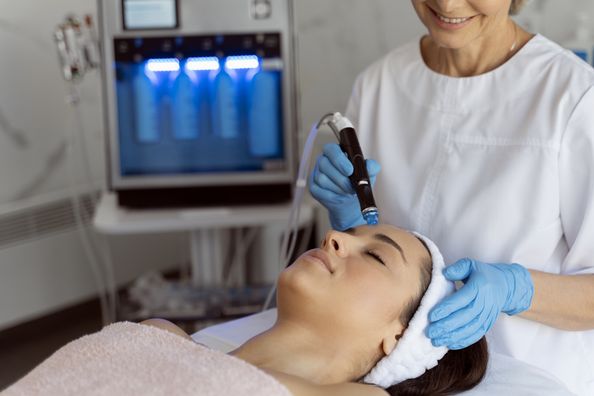You’ve been thinking about getting Botox or trying microneedling to get rid of those stubborn wrinkles. You plan on making an appointment, but an ad suddenly pops up for an at-home solution that promises to smooth out wrinkles once and for all, for half the price.
The thought of solving your wrinkle problem from the comfort of your couch might be tempting. But this is one of those cases where if it sounds too good to be true, that’s because it’s really not true.
There are many types of skin procedures, from those that make your skin smooth to those that remove unwanted tattoos, that should never be attempted at home. Trying certain procedures on your own can be not only ineffective, but also downright dangerous.
Here are 5 skin procedures that are best left to the experts.
At-Home Microneedling
Microneedling uses tiny needles to puncture your skin and create small injuries called “micro-injuries.” Your body responds by producing the proteins collagen and elastin to heal the holes and keep your skin smooth and firm. Microneedling can even out your skin tone and texture and make wrinkles or scars less noticeable.
The process is quick and simple for providers (about 30 minutes to an hour), but that doesn’t mean it’s something to try on your own.
Home microneedling kits are not meant to penetrate your skin very far, so they are less effective. Microneedling at home can also be dangerous. You might accidentally pierce your skin, which could then lead to infections or leave scars. It’s also possible to spread viruses like herpes and warts across different areas of your skin.
Also read: What is Microneedling?
Chemical Peels
Chemical peels are a method of exfoliation — removing dead skin cells. They are usually used on the face to target scars, discolored skin, and wrinkles.
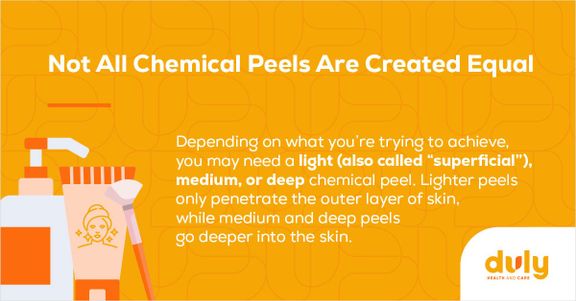
Even though we recommend going to the office for any chemical peel, you may be able to do a light one at home. But when it comes to the medical-grade chemical peels — the medium and deep ones — skip the over-the-counter kits.
Deeper peels typically contain a blend of acids, and home kits can contain much more than the recommended amounts. For example, the FDA only recommends using home peels that contain trichloroacetic acid when the acid concentration is 10% or less. However, there are “home” kits that have concentrations as high as 100%. With so much acid, you could damage your skin, have intense pain, or get acid in your eyes.
Schedule a skin procedure at Duly Aesthetics. If you have concerns about your skin health, you can also make an appointment with a Duly Health and Care dermatologist.
BOTOX®and Dermal Filler Injections
Injections like BOTOX®and dermal fillers (substances that make your skin look smoother and fuller) are among the most well-known methods for fighting visual signs of aging, like wrinkles.
The FDA has approved several injections as safe for use by medical professionals. There are currently no FDA-approved injectable fillers that have been deemed safe for at-home use.
One of the more dangerous trends is buying chemicals and materials online to attempt to make homemade Botox and fillers. Many materials come from other countries and are counterfeit or mislabeled, so you don’t always know what you’re putting in your body. This can lead to serious complications, from infections to lumps and swelling to severely damaged skin. The potential complications from do-it-yourself injections are no joke — a homemade injection can make your skin die and fall off, leaving you looking disfigured.
Finally, be careful about so-called “Botox parties,” where people gather in a home or hotel to get Botox as a group event. These parties can be pretty risky — even though Illinois law requires that only licensed medical professionals can administer Botox, the person giving the injections at the party might not have as much experience. The room where you’re getting the injections might not be as clean as a medical setting, and there won’t always be additional medical professionals on hand in case something goes wrong.
Acne Extractions
Acne might seem like the bane of every adolescent’s existence, but acne can actually affect people of all ages — and if you’re 35 and are getting pimples or clogged pores, you might be looking for a way to get rid of them ASAP.
There are several over-the-counter topical creams and washes that are generally safe to use. But if those don’t work, turn to a professional rather than try to extract it yourself. Although it can be tempting and even satisfying, avoid popping acne at all costs. Popping pimples, blackheads, or whiteheads can leave permanent scars and lead to even more acne or infection.
If you don’t want to wait it out or if topical treatments aren’t working, have a professional remove your acne. And if you have recurring or overly stubborn acne, it may be time for a visit with a dermatologist.
DIY Tattoo Removal
Laser treatments are the main method of tattoo removal. There are also a few other techniques, such as surgical procedures and chemical peels.
All of these methods can be effective if performed by a trained professional.
What’s not usually effective is trying to remove a tattoo by yourself. Not only do the creams and kits not get the job done — they can also severely damage your skin. Many contain strong acids that can cause rashes, burns, and permanent scars. And no at-home tattoo removal treatments have been approved by the US Food & Drug Administration (FDA).
Also, ignore the social media videos that try to sell you on using at-home salabrasion — rubbing salt into raw skin to scrub off ink. Salabrasion is exceptionally painful and can cause serious infections.
Also read: Tattoo Removal
Bottom line: If you need a skin procedure, your first stop should always be a medical professional so that it can be as safe and effective as possible.
Health Topics:

